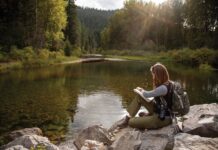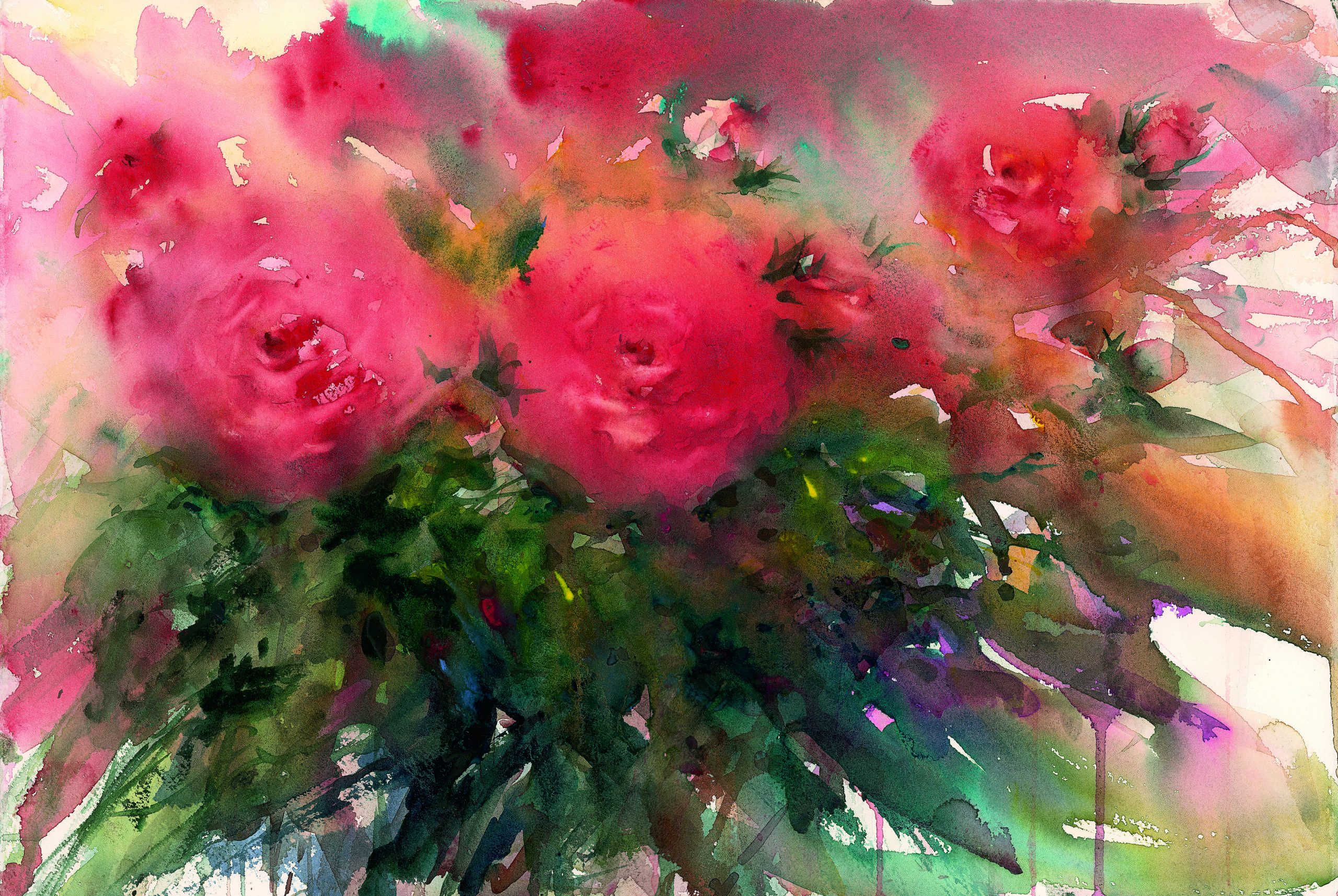
“I became interested in art as a child, in part because of the original watercolors and oils on display in my grandparents’ home, where I grew up,” says Jean Haines. “In time, creating my own paintings was a form of escape from a childhood that was not happy. Color became an escape into an imaginary world that was far more enjoyable. I could draw the dog I wasn’t allowed to own, or paint the flowers I was not allowed to pick. Looking back, I now understand what it was about watercolor painting that brought me peace.
“At stages in my life, I could easily escape to a calm haven simply through brushstrokes of color. I was fortunate to be inspired by great art teachers who recognized a talent within me and encouraged me to paint. That encouragement continued when I married a wonderful man whose career took us all over the world. That gave me a perfect opportunity to study under international masters.
“For example, in China I learned brush control under an incredible mentor from Shanghai. My time studying with him really aided me in handling composition, and it helped me gain the ability to see beauty in simplification. When we lived in Dubai, I became fascinated with portraiture and created that kind of figurative work both in oils and pastels. I pursued further study with masters from India, Pakistan, and the Middle East. Each master added to my growth as an artist. Eventually, I launched a career as a botanical artist, which necessitated painting every detail on every flower. That was a far cry from the loose, interpretive way I approach watercolors today.

“I am inspired by nature and what I see, and I prefer to paint from life because that is the best way to work. Of course, there are times when working from a photograph has its benefits, such as when I’m painting moving subjects. However, I gain my feeling for a piece from life and then try to capture the essence and emotion from that point. During the summer, I am often found distracted by flowers in my garden, and as the seasons change, so do the colors on my palette. I’m moved by the golds in autumn and the soft shades of spring.
MATERIAL MATTERS
“Over the years, my choice of art materials has changed. For example, while traveling to teach workshops internationally, I came across some fabulous watercolor products I might otherwise have missed. I started with Winsor & Newton products but have expanded my palette to include wonderful colors made by Daniel Smith, Schmincke Horadam, and Old Holland. Color is a huge factor in my art, and as my style evolved, I found myself torn between soft pale watercolors and those that created exciting strong, bold contrasts. I now get excited by a wide range of colors, and I often find myself falling in love with a subject and then taking great pleasure in selecting the right shades to bring it to life on paper. Having said that, I try to avoid painting a subject in a way that is expected.
“I never use graphite to draw out my plans for a painting because I like being guided by color alone. Going straight in with pigment on dry paper, I immediately apply water alongside my first color application to encourage a color flow to wherever I wish my next brushwork to be placed. I work on dry paper; I have found that if I wet the paper first, the color becomes too diluted. And as watercolor dries paler than on application, working with pigment on dry paper suits my style far better.
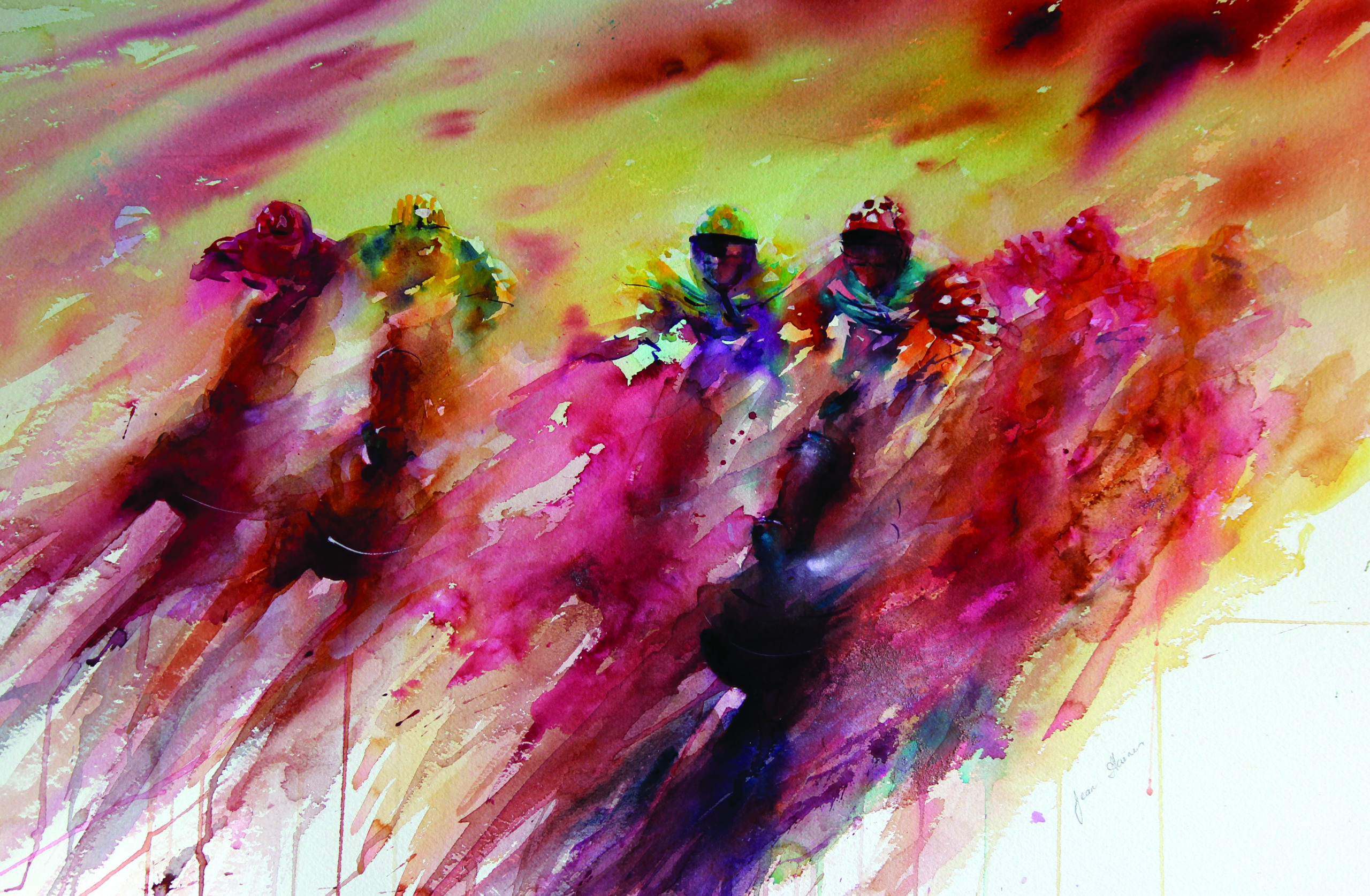
“I use a sorting tray rather than a palette so that I can place a whole tube of color in each section. That makes it far easier for me to work. I work mainly with transparent shades because I love to layer color. However, some subjects, like large horse racing scenes, call for the use of opaques. I try to be a purist and use only watercolor in my work, but on occasion I do add small amounts of designer white gouache to give a different sense of light to a picture.
“I always work from light to dark values, building up a painting as the painting develops. The last touches will always be the strong darks that complete an image and add impact when a painting is viewed from a distance. Artists watching my demonstrations are often amazed at the amount of water I use while painting, but I believe the words water and color should be used in harmony, with one element aiding the other. I paint with my paper at an angle and love watching the pigments flow, interact, and create incredible patterns. I celebrate all the wonderful blooms and watermarks that appear in the creative process rather than trying to avoid or control them. This to me is what watercolor is all about.
“I use a high-quality paper in a heavy weight due to the amount of water I apply in my painting process. I particularly enjoy using Saunders Waterford 300-lb.paper. I prefer a rough surface as it gives me more interesting results when the pigments settle in the small pockets of the paper surface.
“I also enjoy working on large compositions, so the weight of my paper is essential to a good result — and these have often resulted in the best sales in galleries. There is nothing more thrilling than standing in front of a large painting coming to life during the creative process.
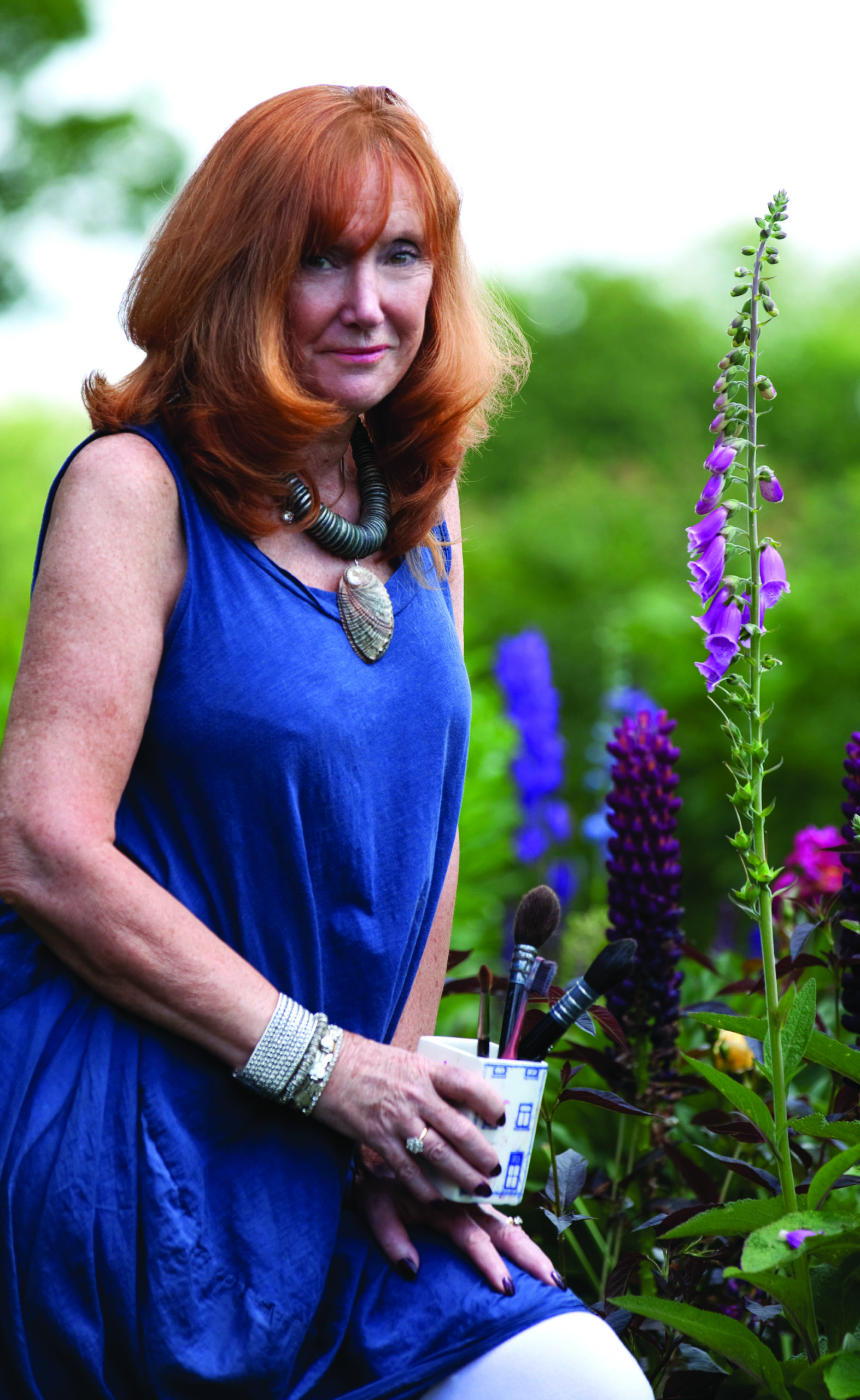
“I designed my own personal range of watercolor brushes because I couldn’t find anything that gave me the feeling I needed of working with my Asian and Western brushwork combination. I needed brushes that loaded well but released color readily with gentle pressure. I needed a full barrel and a glorious point. I hold my brushes along the length of the handle and at angles to the paper to achieve brush marks needed to tell the story of a subject. I now have a fabulous Jean Haines kolinsky sable brush collection; these are very soft, so they can glide over paper. They are available through Rosemary & CO and are heaven to work with.
“Moods greatly affect my paintings too. On the whole, I am an annoyingly happy person, and so my pleasure in creating flows into my results. Maybe that also affects the gallery sales, in that viewers of my finished paintings often feel the joy I held in my heart as the artist while painting each composition. One thing I do religiously is paint small warm-up exercises each day, using different color combinations or texture effects. It is these small exercises that have improved my art over the years and kept my passion for painting alive.”
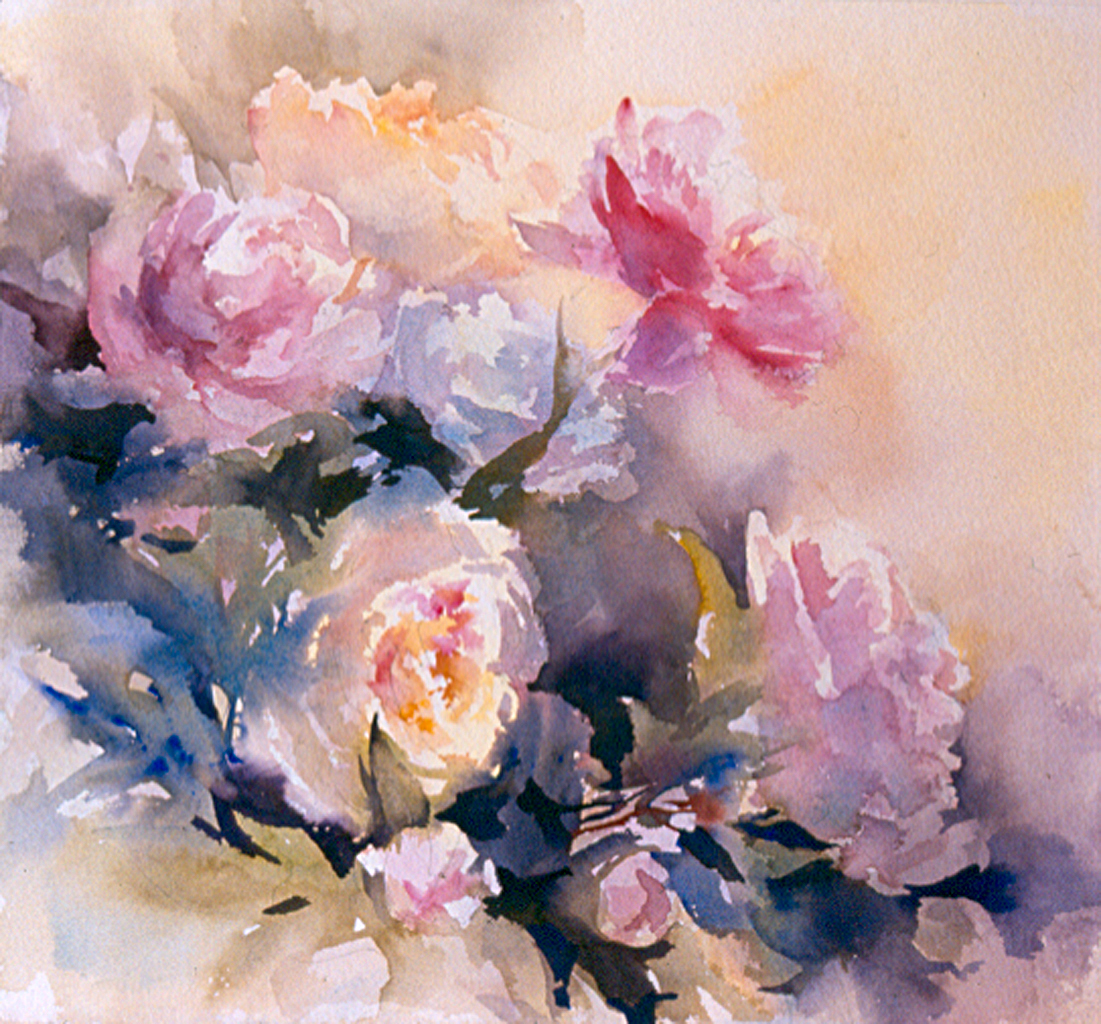
In Simple Watercolor Secrets, Susan Blackwood demonstrates how to take control of your subject matter and create paintings that truly communicate emotion.

